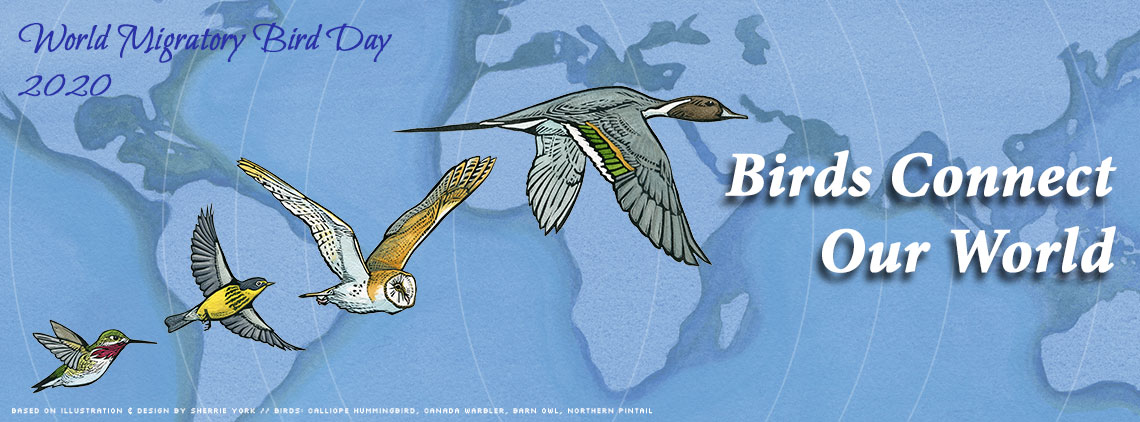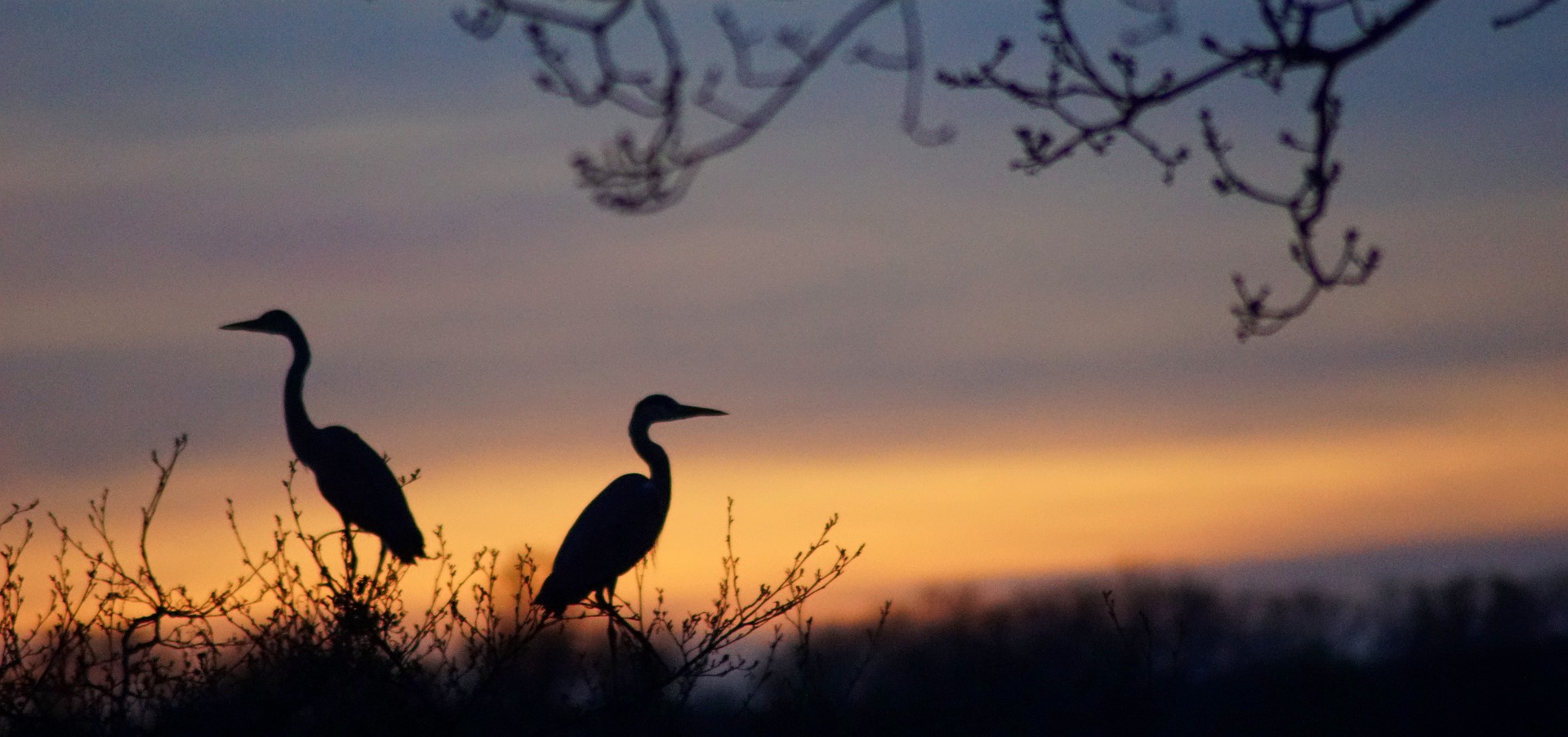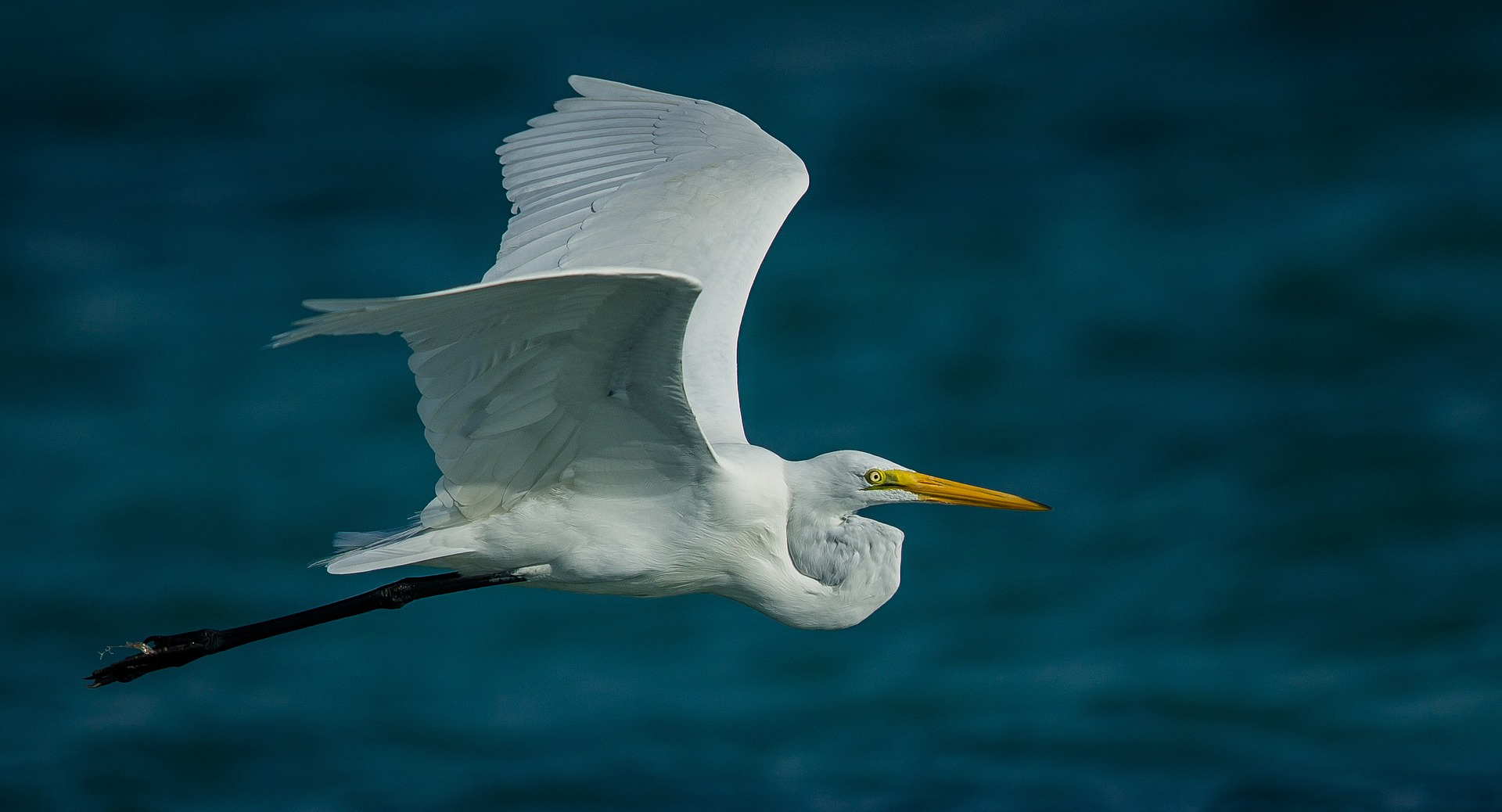World Migratory Bird Day 2020. Join the global celebration!

© Michelle Risi
World Migratory Bird Day will be celebrated by people across the world on Saturday, 10 October 2020 with the theme “Birds Connect Our World”.
Bonn, 6 October 2020 - Birds can be found everywhere: in cities and in the countryside; in parks and backyards, in forests and mountains, and in wetlands and along the shores. They connect all these habitats and they connect us, reminding us of our own connection to the planet, the environment, wildlife and each other. Through their seasonal movements, migratory birds also remind us of nature’s cycles.
This year the theme of World Migratory Bird Day was chosen to highlight these connections and the importance of conserving and restoring the ecological connectivity and integrity of ecosystems that support the natural cycles of migratory birds and that are essential for their survival and well-being.
Approximately 1,800 of the world’s 11,000 bird species migrate, some covering enormous distances. Because migratory birds depend on a network of sites that cross national borders along their migration routes for breeding, feeding, resting and overwintering, international action to protect them is essential.
Hundreds of virtual talks and a wave of online interactions dedicated to migratory birds are expected to take place in many countries on the day, with educational programmes being offered virtually by many organizations including schools, parks, zoos, forests, wildlife refuges, wetlands, museums and libraries.
The UN-led campaign aims to raise awareness of migratory birds and the importance of international cooperation to conserve them. It is organized by a collaborative partnership among two UN treaties -the Convention on Migratory Species (CMS) and the African-Eurasian Migratory Waterbird Agreement (AEWA) -and the Colorado-based non-profit organization, Environment for the Americas (EFTA).

Events around the world
As a result of COVID 19, events marking World Migratory Bird Day 2020 are predominantly migrating indoors and online.
Virtual talks and a wave of online interactions dedicated to migratory birds are expected to take place in many countries on the day: www.worldmigratorybirdday.org/octoberevents
Statements of support
Statements of support for World Migratory Bird Day, a description of the campaign and its history as well as details of registered events can be found on the global campaign website.
WEBSITE
FLYER
SOCIAL MEDIA
Pack: https://bit.ly/WMBD2020
@WMBD
#WorldMigratoryBirdDay
#WMBD2020
#BirdsConnectOurWorld

Migratory birds matter
- Migratory birds are vital to the functioning of our planet’s ecosystems, essential to sustaining life on Earth.
- Migratory birds bring multiple benefits to humans by providing seed dispersal, pollination, pest control and other ecosystem services and functions.
- They also provide major economic benefits and jobs, for instance, through tourism, research and education, and leisure activities such as bird watching and photography.
- Birds have played a major role in human culture. They are reflected in art, song, dance, theatre, music and religion throughout human history.
- Birds inspire us and help us connect and re-connect with nature.
Ecological connectivity is essential for migratory birds
- Ecological connectivity ensures that migratory birds can move between resting, breeding and feeding sites that support them during their life cycle.
- Over the course of more than hundred million years migratory birds have evolved and developed complex migration strategies, adapting to climate change, annual weather cycles and specific food availability.
- Migratory birds need to be able to travel unimpeded along a network of well-functioning breeding, stop-over and wintering sites to reproduce, refuel and survive.
- The impacts of a range of human activities on the environment are affecting birds in different countries along their migration routes, so it is essential that countries work together and that conservation action is coordinated and takes place in all the countries they pass on their journeys.
About World Migratory Bird Day
World Migratory Bird Day is celebrated on two peak days each year (the second Saturdays of May and October) to highlight the need for international collaboration to ensure the conservation of migratory birds and their habitats globally. Registered events to mark World Migratory Bird Day 2020 will include bird festivals, education programmes, media events, quizzes, competitions and film screenings. First held in 2006 to promote the conservation of migratory birds and to counteract the negative publicity they were receiving across the world, due to concerns about their role as potential vectors of the Highly Pathogenic Avian Influenza (HPAI) virus subtype H5N1 – now commonly referred to as bird flu. Since then World Migratory Bird Day has gained in popularity with over 2,000 events organized in over 100 countries since the campaign’s inception.
The Convention on Migratory Species (CMS) and the African-Eurasian Migratory Waterbird Agreement (AEWA) — two intergovernmental wildlife treaties administered by the United Nations Environment Programme (UNEP)— organize the campaign in partnership with the Colorado-based non-profit organization, Environment for the Americas (EFTA).
About the Convention on Migratory Species (CMS)
The Convention on the Conservation of Migratory Species of Wild Animals aims to conserve terrestrial, aquatic and avian migratory species throughout their range. It is an intergovern-mental treaty concerned with the conservation of wildlife and habitats on a global scale. Since the Convention's entry into force in 1979, its membership has grown steadily to include 131 Parties from Africa, Central and South America, Asia, Europe and Oceania.
www.cms.int @bonnconvention
About the African-Eurasian Migratory Waterbird Agreement (AEWA)
The Agreement on the Conservation of African-Eurasian Migratory Waterbirds (AEWA) is an intergovernmental treaty dedicated to the conservation of migratory waterbirds that migrate along the African-Eurasian Flyway. The Agreement covers 255 species of bird ecologically dependent on wetlands for at least part of their annual cycle. The treaty covers 119 Range States from Europe, Africa, the Middle East and parts of Asia and Canada. 80 countries and the European Union have become a Contracting Party to the agreement.
www.unep-aewa.org @UNEP_AEWA
Environment for the Americas (EFTA)
EFTA is a Colorado-based non-profit organization that provides bilingual educational materials and information about birds and bird conservation to raise awareness of migratory birds and to promote actions that protect migratory birds throughout the Americas.
For more information please contact:
Florian Keil, Information Officer, CMS and AEWA Secretariats in Bonn, Germany. Email: [email protected] | Tel: +49 228 8152451
Susan Bonfield, Executive Director, Environment for the Americas, Boulder, CO, USA. Email: [email protected] | Tel: +001 970-393-1183

Last updated on 04 June 2021


